13 February, 2023
Las Salinas - Casa Ana Birding - Carretera la Boca - Canal de los Patos
".....paying attention to birds, being mindful of them, is being mindful of Life itself"
Graeme Gibson
We had a good night's sleep and went down to a fine breakfast in the convivial company of Jose and Damita, joined by Tania and Jiovani, and Jim and Barb - and all was well with the world.
After picking up our other amigos we left for the lagoons of the Zapata Swamp, anxious for a good start to our day's birding. We were not disappointed!
It seemed especially appropriate that a Cuban Blackhawk (Buteogallus gundlachii) was one of the first birds to greet us. It has a regal appearance, is endemic to Cuba, and is not always so cooperative.
Familiar shorebirds were going about the business of finding food. There were Least Sandpipers (Calidris minutilla) probing in the mud for tiny invertebrates.....
We do not frequently see Ruddy Turnstones (Arenaria interpres) at home, so it was a particular delight to see them here.
The ever fluctating tides of taxonomy have at various times accorded full species status to the white morph of Great Blue Heron (Ardea herodias occidentalis) but the prevailing opinion, based on morphology other than colour, and molecular fingerprinting, is that it is a subspecies of Great Blue Heron.
In the following picture there is an immature Little Blue Heron (Egretta caerulea), a Reddish Egret (Egretta rufescens) and American White Ibis (Eudocimus albus).
Their different feeding practices enable them to exploit the same resource without entering into direct competition with each other.
Reddish Egret surely holds the prize for the most madcap feeding style. It dances, leaps, opens its wings, stabs, runs, in a frenzied, intense ballet, incomprehensible to the casual and uninformed human eye.
It obviously works, however, and if it should incidentally provide entertainment and amusement to human gawkers, there is no harm in that.
Another Cuban Black Hawk was maintaining a vigil over the marsh, and I was left to wondering whether the hawk waits to see whether the antics of the Reddish Egret drives crabs into shallow water where they become easy pickings.
A group of colourful American Flamingos (Phoenicopterus ruber) attracts the attention of everyone, impassioned birder or casual observer.
The intense colour is derived from carotenoid in the diet - the more carotenoid the deeper the hue, so it is evident that these birds are getting lots of shrimp and other suitable items from these saline lagoons.
A Tricoloured Heron (Egretta tricolor) has a sort of stately, dignified look to it.
There were Black Skimmers (Rynchops niger), Caspian Terns (Hydroprogne caspia) and Royal Terns (Thalesseus maximus) far out on the other side of the water, but Tania managed a picture showing a part of the group.
Magnificent Frigatebirds (Fregata magnificens), those pirates of the air and supreme masters of flight, cruised overhead from time to time.
Neotropic Cormorants (Nanopterum brasilianum) were not infrequently seen, although mostly in flight, or far out.
Generally, we observed Tri-coloured Herons aloof from the other birds, feeding deliberately - and successfully.
We went to the same enticing little restaurant as the previous day for lunch, and the meal was equally delicious.
At one point Lisa and Victoria, having been down to the beach, strolled over from their casa, with umbrellas shading them from the hot Cuban sun (I can't imagine what it must be like in July and August!).
Damita came on a short walk with us down to a lake not far away - and it was quite lovely.
On the way down we saw several Northern Curly-tailed Lizards (Leiocephalus carinatus), always a pleasure.
I remember being captivated by them the first time I ever visited Cuba and that sentiment has not diminished.
On the way back a Cuban Crow (Corvus nasicus) kept company with us for part of the way.
We all regrouped at 15h:00 to pay a visit to Casa Ana, the home of Tania's friend, and a magnet for a multitude of exciting birds, most significantly the endemic Bee Hummingbird (Mellisuga helenae), the smallest bird in the world.
I don't think we ever ceased to be surprised at the number of Cape May Warblers (Setophaga tigrina) we saw. One or two in a whole year at home is remarkable, yet in Cuba it was not unusual to witness a dozen in an hour.
This butterfly gave me a little trouble identifying it, and I still have it only down to genus. I am fairly confident that it is a member of Memphis.
Cuban Emerald (Riccordia ricordii), the "other" Cuban endemic hummingbird was commonly seen in parks and gardens - always a pleasure, however.
West Indian Woodpecker (Melanerpes supercilliaris) is bold in both colour and demeanour and seems very fond of hummingbird syrup or other sources of sweet liquid.
The Bee Hummingbird is incredibly tiny, easy to miss when quietly perched, but it was a common visitor to Ana's garden.
And warblers still entertained us.
I don't think we could ever become satiated with Bee Hummingbird, and as you might imagine we took scores of pictures.
It is difficult to capture the crimson gorget of a male Bee Hummingbird. You have to be in exactly the right position and generally the bird reveals its colour for the briefest of moments before turning its head and everything changes to black.
Here are Miriam's best attempts.
Prairie Warbler (Setophaga discolor is a "whoop and holler, call your friends and let them know" kind of warbler in southern Ontario. In Cuba we saw it daily.
There was a lovely inlet at the bottom of Ana's backyard and a Yellow-crowned Night Heron (Nyctanassa violacea) was perched in the open, affording everyone a great look.
A striking Cuban Oriole (Icterus melanopsis) was the last bird we saw on our way to field and pastures to search for different species.
Years ago I visited the Sabal Palm Sanctuary in Texas, USA, and I am fairly sure that these palms are a type of Sabal (Arecaceae).
Dinner was taken at the other casa where Selwyn, Victoria, Lisa and Tina were staying. The meal was great but there was not the conviviality we experienced every night with Damita and the two Joses.
Tania, Jim and I stayed up to try to see a pair of American Barn Owls (Tyto furcata) we knew had been sighted close to our casa, and our patience was rewarded when they showed up around 21h:15. One perched in a tree quite far off, but clearly visible, the other circled around in flight and disappeared.
Miriam had turned in early but she got up and was able to see the perched owl.
A superb end to a fabulous day.




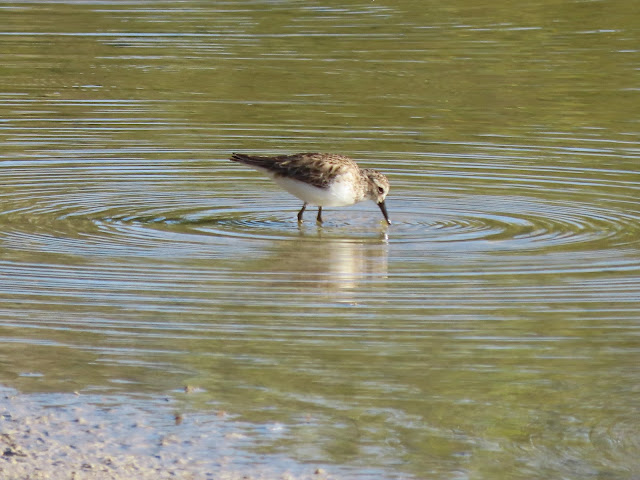







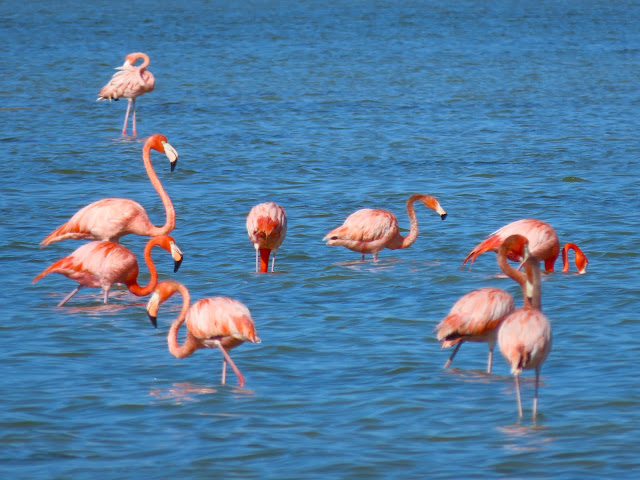






























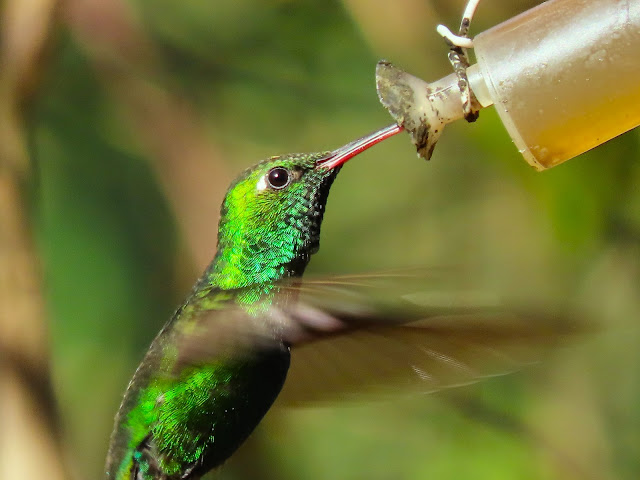





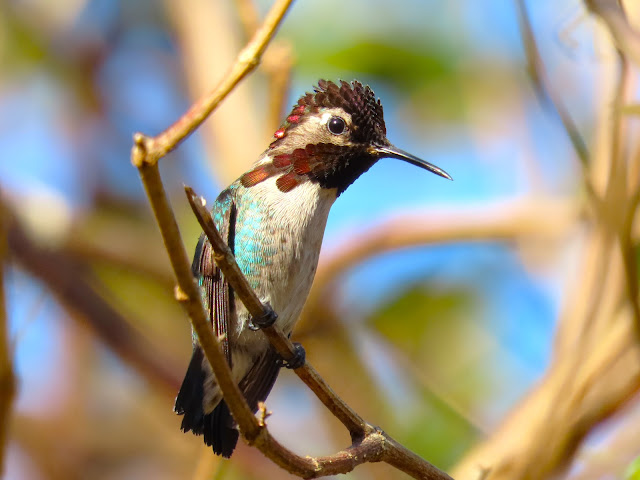







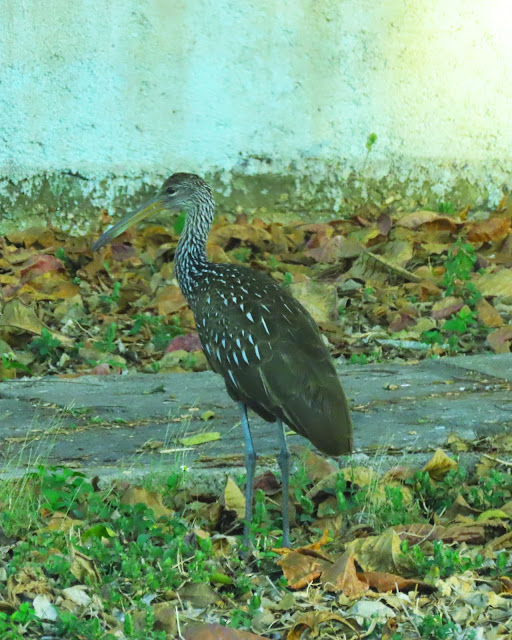













...David, you enjoyed and captured some beautiful sights.
ReplyDeleteBeautiful birds and fabulous photographs.
ReplyDeleteIt was nice to see the colourful American Flamingos.
All the best Jan
So interesting, as always. What a trip you all had. :)
ReplyDeleteOh,, my. Seeing the cousins of Canadian birds must have been exciting. So beautiful.
ReplyDeleteDear David,
ReplyDeleteThe Egrets are very beautiful. It is interesting that there are so many woodpeckers around the world. Here in Norway there are seven different species.
Hugs and kisses, Marit
And the woodpeckers are all wonderful, aren't they?
DeleteYes, they are all wonderful! I have two woodpeckers outside my window every day, and I love to watch them.
DeleteHari OM
ReplyDeleteA gem, every single one!!! (And I am pretty sure that the taller one is also Sabal palm, David, just grown taller!) YAM xx
In looking at the picture I think you are right, YAM xx
DeleteSo many birds that I have never seen before, and the colors.. oh the colors are so vibrant. Do you use a telephoto zoom on your camera or what type of lens do you have? Your photos are exceptionally clear and precise. Traveling to Cuba, how much I’d like to go there but I don’t think the US allows it. I even thought of traveling to Martinique and then fly to Cuba with my French passport, but then I don’t know if the US would let me get back in, even with my US passport. Seeing those American Flamingos in the wild … I don’t think I would remember to take photos! And the Cuban Emeralds, what an exquisite little bird with a glorious color. You certainly saw many lovelies.
ReplyDeleteWe have no sophisticated equipment. Our camera is a Canon 70x Powershot. As for visiting Cuba, we ran into several Americans there so it is obviously possible to gain entry - and the Cubans do no stamp your passport so there is no evidence of having visited.
DeleteAnother wonderful day packed with exciting sightings. I echo Vagabonde's thoughts about going to Cuba - I had also thought doing it by detour and using my German passport. These restrictions by the US are just so ridiculous! I think Miriam did well in capturing the crimson gorget of the Bee Hummingbird. How much tinier than an Anna's are they? Hummingbirds have a very special place in my heart and I feel so happy that we have them year round here. But the richness in birds you saw in Cuba - fantastic!
ReplyDeleteI will email the size comparisons to you, Carola.
DeleteThe herons, warblers and hummers caught my eye. All are a feast for the eyes though, David! Such a great expedition!
ReplyDeleteThe Reddish Egret looks as if he walks on water. Your wife, Miriam, is lovely, David.
ReplyDeleteLove,
Janie
Thank you, Janie. I agree.
DeleteSo many pretty birds. I've seen the white morph of the Great blue herons when I was in the Everglades several years ago. It's so hard to tell them from the great egrets. I love the variety of hummingbirds, and wild flamingos are on my animals to see list. Looks like you had a really nice birding trip and probably checked several birds off your list.
ReplyDeleteThat was my fourth trip to Cuba, Erika, so it's getting harder and harder to find something new. There were a few new species, however, and it is always delightful to see old friends too, avian and human.
DeleteWonderful pictures as always. I especially love that lizard.
ReplyDeleteIt is very appealing.
DeleteGreat shots! And so much variety!
ReplyDeleteA bird watcher's paradise. How wonderful to be able to watch the bee hummigbird in action.
ReplyDeleteWhat a great series of photos these are from your trip.
ReplyDeleteI really love the Palm Warbler, the Cuban Emerald and the Hummingbird.
These species that do not occur here.
Greetings Irma
Encore plein de beaux oiseaux, les colibris sont tellement mignons et colorés!
ReplyDeleteOn ne sait plus où regarder.
Bonne journée
What a majesty the white heron is... and also the other herons with their different feeding techniques... and of course the flamingos in their orange dress are a feast for the eyes. I saw flamingos on the island of Sardinia in the Mediterranean, but they had less shrimp e.c. as food, so they weren't as colorful. Nevertheless, we were very happy to see them.
ReplyDeleteAnd that emerald woodpecker and the exes also fascinate me a lot... not to mention the hummingbirds.
Thank you.
What a joy.
Thank you for showing us this incredible tour. What a huge variety of beautiful birds, I was especially delighted with the photos of the Bee Hummingbird.
ReplyDeleteIt is amazing to see so small a bird, Maria.
DeleteHello David, I continue to be greatly moved by reliving in your posts the interesting bird observations that you have had the opportunity to enjoy on that fabulous trip to Cuba. The variety of species and the incomparable beauty of some of them fascinates me. A big hug, my friend.
ReplyDeleteHello David :=)
ReplyDeleteThe variety of beautiful birds is a joy to see. I love them all.
Hugs from stormy Portugal.
Just stunning photos. How fortunate that you are there to share this all with us.
ReplyDeleteA very nice variety of of birds to see and enjoy. The photos are outstanding.
ReplyDeleteThe hawk is quite impressive.
ReplyDeleteGlad you saw so many wonderful birds, what a variety. Miriam's photos are always fantastic. Hugs, Valerie xxx
ReplyDeleteThe white stork is not used to people.
ReplyDeleteThat egret is pretty fantastic but for my two cents you can't beat a gorgeous pink flamingo (though I'd love to have one of those warblers around; they're so pretty! Miriam looks like she found the best spot! What a fabulous holiday!
ReplyDeleteSiempre nos sorprende la naturaleza, ya sea por las especies vegetales o por la vida animal.
ReplyDeleteI'm having trouble imagining you on the straight and narrow road!!
ReplyDeleteLove all the photos - Cuba certainly has a lot on offer. Mxx
Seeing all these fabulous birds and beautiful environments, thanks to Miriam's great photography, it's no wonder to me that you find yourself drawn back to Cuba, David.
ReplyDeleteWe're having a cold and snowy end to the week here, but I guess it's not as snowy and cold as it is in Ontario?
Best wishes to you both - - - Richard
I have four spaces left on a repeat journey next February, Richard. Wanna come? You could visit here first and see Snowy Owls.
DeleteThank you for that very kind invitation, David. Sadly, with Lindsay's health being what it is, I don't feel that I could leave her to be somewhere so remote for any great length of time, and the finances rather prohibit such adventures too. Twenty years ago, it might have been different!
DeleteThere are Phoenicopterus ruber also in Italy, but they in the Sardinia island only, in the middle of the Mediterranea sea (fenicotteri rosa in Italian language).
ReplyDeleteGreat pictures of the West Indian woodpicker and the Cuban emerald. Congrats on such nice post!
Maravilloso querido amigo David, cada vez me entran más ganas de ir a Cuba. Todo se ve precioso. Un abrazo.
ReplyDeleteQuerido David es un viaje maravilloso por la gran cantidad de hermosas aves que avistasteis. Y todas con preciosos colores. Me encantan. Enhorabuena por tan estupendas fotos. Un abrazo enorme para ti y para Míriam.
ReplyDeleteHi David - what an amazing trip and so many different species to see ... humans too! I love the different beaks and feeding for their own types of food ... A wonderful place to visit. Thanks for sharing all ... cheers Hilary
ReplyDeleteBeautiful birds and incredible photography!
ReplyDeleteWhat an amazing expedition, David!
A great series of birds you encountered David. To much to chose from what I lik most. But I am glad there are still places were so many birds are to be seen.
ReplyDeleteWarm regards,
Roos
Hello David,
ReplyDeleteAwesome collection of trip photos and birds. I love them all, cute capture of Miriam resting. Cuba looks like a great place for the birder! Thank you for linking up and sharing your post. Take care, have a great weekend. PS, I was away so I am sorry I am late commenting, thank you for leaving me a comment.
Wonderful photo's as always. So many colorful birds and the shots you got with some in flight, amazing. Yeah for Miriam....she does know how to relax!! Getting out of one of those can be quite the challenge though.
ReplyDeleteSandy's Space
That's what husbands are for!
DeleteMany beautiful birds in Cuba. Those Flamingoes and Emerald birds are outstanding.
ReplyDeleteI was delighted to see this large variety of birds and even enjoyed the Northern Curly-tailed Lizard. Some birds I recognized and others I didn't, all absolutely wonderful. It sounded like an amazing trip.
ReplyDeletehi, I have never been to Cuba but from what I see in your post I would have loved it. :)
ReplyDeleteHello David,
ReplyDeleteAwesome post on your Cuba Birds, the photos are all beautiful. I especially love all the hummingbirds. The Lizard is cool too. Thank you for linking up and sharing your post. Take care, have a great weekend. PS, thank you for leaving me a comment.
Excellent photos David, I can't chooce between all the beautiful birds. I like them.
ReplyDeleteThe hummingbird shots are wonderful, especially considering how they never stop moving, and Miriam looks serene in the hammock. Incidentally, I did send an email as you suggested but it could have fallen into some cyber black hole. :)
ReplyDeleteHello David,
ReplyDeleteI am in love with warblers, there are so many of them and they are so beautiful, it is a joy.
It is understandable that you can never get enough of hummingbirds !
Thank you for all these passerines of the garden
You took some very fine pictures!! : )
ReplyDeleteA trip to remember.
What a fantastic trip they have made to Cuba, how many different birds and surely endemic to the island. I really liked the rufous shape of the American Kestrel. It can be seen in the photos how they enjoyed it, and also reading your story. I'm already making time for blogs, I'll keep reading. A big hug
ReplyDeleteI love the way you write, David. The hummingbird photos were gorgeous!
ReplyDelete